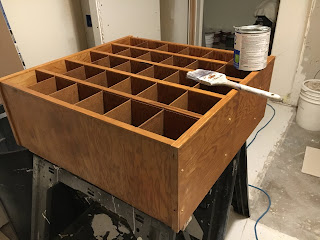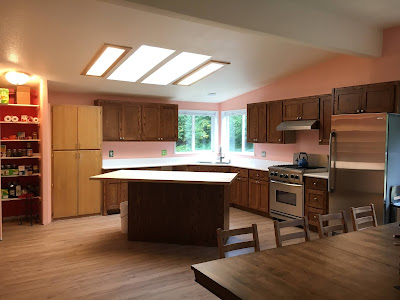I fell in love with nested horizons in her Aptos studio and experienced them myself when I flew small planes, decades ago. You can also see them driving through the Central Valley of California and from many vista points along highways and hiking trails. Nested horizons speak to the soul of soaring like a bird, freely floating across the landscape, an immersion into something far larger than yourself. Nested horizons can evoke a spiritual experience that soothes your soul and expands your consciousness.
I dabbled with nested horizons a bit when I was doing a lot of watercolor. But I was never transported by the landscapes I was able to create with my limited knowledge and experience with watercolor. The paint dried too fast. The detail was hard to capture. The crispness of the ridge lines was hard to maintain with successive layers of paint. It became tedious rather than transformative.
As it turns out, all that needed to happen was a change in medium. As it turns out, wall paint works wonderfully well.
 |
| Nested horizons |
Enter nested horizons.
We had plenty of paint left over from our kitchen-cabinet project, plus some tan and blue left from painting the bathroom. All of the colors were enamel, so they had a soft sheen to them, setting them apart from the flat peach of the kitchen wall.
The colors went up in order of increasing vibrancy, enhancing the visual of receding into the background. The household voted for jagged ridge lines, since the Cascade and Olympic ranges visible from Camano Island are dramatically jagged. It was easy to sketch out and easy to paint, because I could concentrate on the crisp edges without worrying about the paint drying before I could fill in the middle.
Even though it cost me a week in bed with muscle spasms from my craning neck, I would do it again in a heartbeat. It was so much fun and turned out so pretty.
 |
| Second coat for the tangerine range |
We all oohed and awed as the various elements fell into place.
And now we have a beautiful work station for juicing and mixing and baking and chopping. A perfect project for a drizzly week.
 |
| Find Waldo |
















